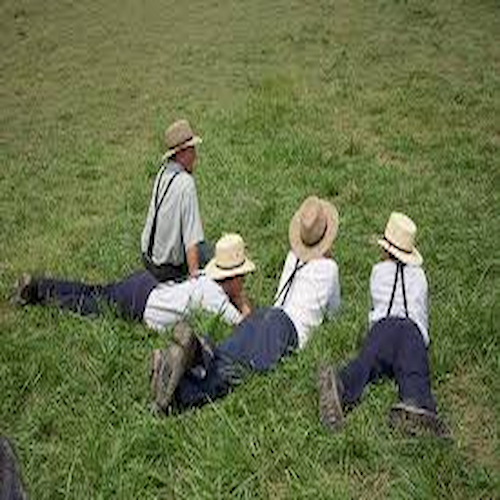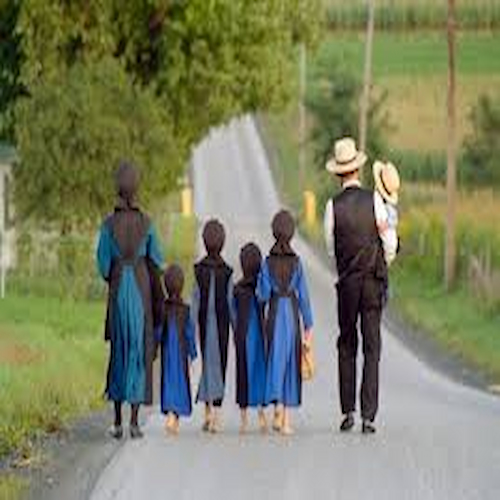The Amish community, known for its distinctive lifestyle and strong adherence to traditional values, offers a unique glimpse into a way of life that contrasts sharply with modern society. Primarily located in the United States, particularly in states like Pennsylvania, Ohio, and Indiana, the Amish have maintained their cultural identity for centuries, rooted in their Anabaptist religious beliefs. This article delves into the various aspects of the Amish way of life, exploring their historical origins, core beliefs, daily practices, educational systems, economic activities, and the delicate balance they strike with modern technology and broader society. Through this exploration, we aim to foster a deeper understanding of the Amish community and the principles that guide their existence.

Introduction to the Amish Community
Overview of Amish Culture
Picture this: a community where horse-drawn buggies roam the roads, everyone pitches in to help each other, and technology takes a backseat—or maybe even tosses out the window. Welcome to the Amish community! Rooted in a blend of simplicity, humility, and a dash of old-fashioned charm, Amish culture emphasizes agriculture, craftsmanship, and a strong commitment to family and community values. If you’ve ever wondered how a group of people can thrive without smartphones and social media, the Amish might just have the secret recipe. Spoiler alert: it’s not all about butter and cheese, although they do have some impressive dairy skills!
Amish Distribution Across the United States
Amish folks aren’t just hanging out together in one tidy little corner of the USA; they’re scattered across several states, creating distinct communities. Ohio is home to the largest population, with the largest concentration found in Holmes County, where you’ll find more buggies than cars on some days. Pennsylvania and Indiana also host sizable Amish populations, each with their quirks and traditions. You’d think they’d move to the city for Wi-Fi, but nope! These communities prefer the rolling hills and farmland, which is perfect for their agricultural way of life. Just remember—when you see a horse and buggy, it’s probably not a theme park attraction, but genuine Amish craftsmanship at its finest.
Historical Background and Origins
Amish Early Settlements in America
The Amish didn’t just sprout up in the U.S. like daisies in spring; their roots stretch back to Europe in the late 1600s. The first groups of Amish settled in Pennsylvania in the early 18th century, seeking religious freedom and an escape from persecution. They were attracted to the new world’s promise of land and opportunity, all while adhering to their beliefs of simplicity and community. They quickly adapted their farming techniques to the American landscape, leading to the thriving, distinct communities we see today. You could say they really nailed the whole “new beginnings” thing—complete with a side of barn-raising.
Influence of European Anabaptist Traditions
The Amish are like the cool kids at the Anabaptist family reunion—sharing a lineage with Mennonites and Hutterites, but with their own flair for tradition. Emerging from the Radical Reformation in Europe, they carry with them the principles of pacifism, adult baptism, and a commitment to living a life separate from the world. Their European origins shaped a distinct identity that respects both their past and present. So, the next time you see a traditional Amish barn, just remember, it’s not just a structure; it’s a piece of history built on centuries of faith and resilience!
Core Beliefs and Values
Amish Religious Principles and Practices
The Amish are serious about their faith, and their religious practices reflect their commitment to following the teachings of Jesus Christ. They gather in homes for church services, which are as much about community as they are about spirituality—imagine a potluck with a side of worship. Their beliefs emphasize humility, service, and non-resistance, so you won’t find them rushing into conflict or making a fuss over material possessions. You might even say their motto is “less is more,” especially when it comes to gadgets (like, say, an iPhone).
The Importance of Community and Family
In the Amish world, the family unit and community are everything—like a giant quilt made up of individual squares where everyone contributes a patch of love. They value cooperation over competition, often gathering for group activities like barn-raising or quilting bees (no, not the swarming kind). Every member of the community plays a role, ensuring that no one is left behind. Their motto of “bearing one another’s burdens” isn’t just a catchphrase; it’s a daily practice that keeps their tight-knit communities thriving. So, if you’re looking for friendship, loyalty, and homemade pie, the Amish community is where it’s at!
Daily Life and Practices
Amish Traditional Clothing and Its Significance

Amish clothing isn’t just a fashion statement—it’s a statement about their values. They dress modestly, often in plain fabrics and colors that reflect their belief in simplicity. For men, this looks like black trousers, white shirts, and the iconic wide-brimmed hats. Women often wear long dresses with bonnets to top off their look. And no, you won’t find any flashy patterns or trendy accessories; it’s all about function over fashion. Each piece of clothing serves a purpose—whether it’s practical for farming or simply to show their commitment to modesty and community identity.
Amish Rituals and Celebrations
Rituals and celebrations in the Amish community are like a hearty stew; they’re rich with tradition and full of flavor! One of the most notable is the Amish wedding, which can last for several days, complete with feasting, dancing, and lots of homemade goodies (because who doesn’t love cake?). Other celebrations include church services, holidays, and seasonal festivities that bring everyone together. While they might not throw the same kind of parties as your average neighbor, their gatherings are a testament to their deep-rooted values of love, hospitality, and togetherness. Plus, you’ll never leave an Amish celebration hungry, that’s for sure.
READ ALSO: The Algonquin, Colonial Tales, Culture and Traditions
And there you have it—the Amish community in all its simplicity and splendor. Whether you’re fascinated by their steadfast traditions or simply in it for the delicious baked goods, there’s no denying that the Amish way of life offers a unique perspective on community and faith in modern America.
Education and Child Rearing
Amish Schools and Curriculum
Imagine a classroom where the teacher’s desk is a simple wooden table, and the school day starts with a prayer rather than a bell. Welcome to Amish schools, where education is both practical and community-focused. Most Amish children attend one-room schoolhouses that serve grades one through eight, usually run by local community members. The curriculum is straightforward: think reading, writing, arithmetic, and a hefty dose of religious instruction. But don’t expect calculus or advanced science here—it’s less about SAT prep and more about preparing kids for a life of simplicity and manual work. These schools often emphasize virtues such as hard work, humility, and cooperation, ensuring that the young ‘uns grow up with a solid moral foundation. And yes, recess is still a thing, but instead of video games, you’ll find kids playing tag and hopscotch outdoors, soaking up that fresh air and sunlight.
Approach to Parenting and Discipline
When it comes to parenting, Amish families take a village approach—literally. Children are raised not just by their parents, but by the extended family and the entire community. Discipline tends to lean on the side of gentle correction rather than harsh punishment. The idea is to foster respect and self-discipline through example and guidance, rather than fear. Kids are encouraged to learn from their mistakes, often through hands-on work, which teaches them responsibility and the consequences of their actions. Plus, there’s nothing like a little farm chore to drive home the value of hard work! In this environment, children learn not just to follow rules, but to understand the “why” behind them, creating a well-rounded and conscientious adult.
Economic Activities and Sustainability
Farming Practices and Food Production
If you think of the Amish way of life, farming probably springs to mind faster than a rabbit in a hat. The Amish are known for their sustainable farming practices that prioritize the land over profit margins. Most Amish families operate small to medium-sized farms, relying on traditional methods—no tractors, thanks! Instead, they employ horse-drawn plows and hand tools, which not only keep the soil healthy but also connect them to the land in a way many modern methods can’t replicate. Crops are often grown for personal use or local markets, promoting fresh, organic food that’s as far from a supermarket aisle as you can get. Want to know how they keep it all sustainable? Crop rotation, composting, and a hearty belief in taking care of Mother Nature ensure that the land remains fertile for generations. Talk about farm-to-table.
Crafts, Trades, and Local Businesses
The Amish are not just farmers; they’re also skilled artisans. Many communities thrive on traditional crafts and trades, such as woodworking, quilting, and baking. Ever wondered where those beautiful handmade quilts come from? You guessed it! From talented Amish hands. Local businesses often reflect these skills, with many artisans selling their wares directly to consumers, cutting out the middleman and keeping the money within the community. Markets filled with fresh produce, baked goods, and handmade crafts are a feast for the eyes (and the stomach). This model not only supports the local economy but also nurtures a sense of pride in craftsmanship and self-sufficiency. Nothing says “I support local” like a hand-carved rocking chair that hasn’t seen a power tool in its life!
The Role of Technology in Amish Life
Selective Use of Modern Technology
In the Amish community, technology is like that one friend who always shows up uninvited: it’s not that they don’t like it, but they’re picky about when and how they let it in. The Amish carefully choose which technology fits with their values and lifestyle. For example, they might use a gas-powered generator for essential tasks, but forget about smart devices—those are a no-go. This selective approach helps them maintain their identity and avoid some of the stresses that modern technology often brings. They prioritize face-to-face interactions over screen time, valuing community over convenience. So, while your phone gets its daily dose of notifications, the Amish folks are probably chatting over a cup of homemade cider, reminding us that sometimes, less really is more.
Impact on Community Dynamics
You know that saying, “Out of sight, out of mind?” The Amish take it to heart when it comes to technology. Their limited use of modern gadgets fosters a strong sense of community. Without the distractions of social media and smartphones, relationships between neighbors are personal and direct. They communicate face-to-face, share resources, and work together on community projects, creating a tight-knit social fabric. This interconnectedness also means that the community is resilient, supporting each other during tough times. And while the world outside races ahead, the Amish maintain their traditions, valuing community bonds over fleeting technological trends. It’s a lifestyle that might seem quaint to some, but to them? It’s the foundation of their existence.
Interactions with Broader Society
Relationships with Non-Amish Neighbors
Despite their distinct lifestyle, the Amish aren’t hermits living in the woods—well, not all the time, anyway. They have relationships with their non-Amish neighbors that can range from cordial to downright friendly. Many non-Amish locals appreciate the Amish way of life and often purchase their crafts and produce. In fact, visits to Amish farms can turn into delightful excursions filled with fresh pies and engaging conversation. Both groups can learn from each other: the Amish can teach resilience and sustainability, while non-Amish can share innovations (just in moderation, of course). It’s a classic case of “you bring the baked goods; I’ll bring the stories,” creating a rich tapestry of shared community life.
Amish Challenges and Adaptations in Modern Times
Of course, no community is without its challenges, and the Amish are no exception. Modern pressures—like land development and changing economic conditions—force them to adapt without abandoning their core values. Some communities have begun to embrace limited technology for business purposes, like using phone lines for orders or employing solar panels for energy. The key here is that any adaptation must align with their beliefs and traditions. This balancing act keeps them relevant while staying true to their roots. Plus, they’re experts at thinking outside the box—who else would consider setting up a successful indoor farming operation or a bakery that sells goods to the wider public without losing that homemade touch? In this age of change, the Amish prove that it’s possible to adapt while dancing gracefully to the rhythm of tradition.
In conclusion, the Amish community represents a rich tapestry of tradition, faith, and resilience in the face of modernity. Their commitment to simplicity, community, and sustainability offers valuable lessons that resonate beyond their own culture. As we continue to navigate an increasingly complex world, the Amish way of life serves as a reminder of the importance of maintaining strong familial ties, preserving cultural heritage, and finding harmony with nature. By appreciating their unique perspectives and practices, we can gain insight into alternative ways of living that prioritize values often overshadowed in contemporary society.
Frequently Asked Questions
What are the main beliefs of the Amish community?
The Amish community is rooted in Anabaptist religious principles, emphasizing humility, simplicity, and a strong commitment to family and community. They value nonviolence, community service, and living a life of faith without the distractions of modern technology.
How do the Amish educate their children?
Amish children typically attend small, one-room schoolhouses, where they receive an education that focuses on basic subjects such as reading, writing, and arithmetic, along with practical life skills. Formal education usually ends at the eighth grade, after which children are taught trades and skills through apprenticeships within the community.
Can the Amish use modern technology?
The Amish approach technology with caution, selectively adopting tools and devices that align with their values and do not disrupt community life. While many Amish communities avoid certain technologies like cars and televisions, they may use items like tractors for farming or telephones in shared buildings for business purposes, always considering how these choices affect their way of life.
How do the Amish interact with non-Amish people?
Amish interactions with non-Amish, or “English” people, vary by community but often include a degree of separation while still engaging in necessary business and social activities. Many Amish members maintain friendly relationships with their non-Amish neighbors, participating in local markets and events, while also adhering to their own cultural practices and values.



